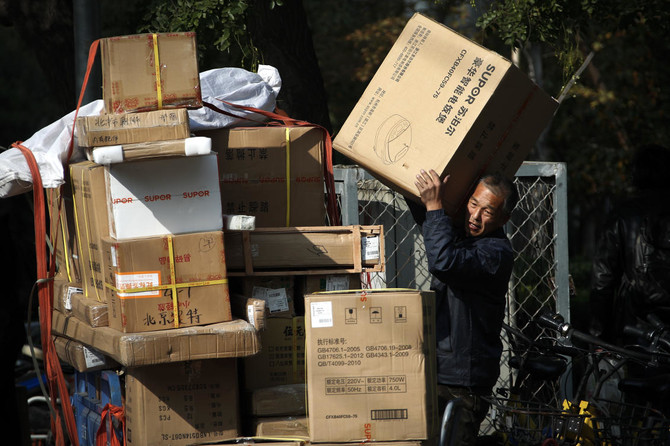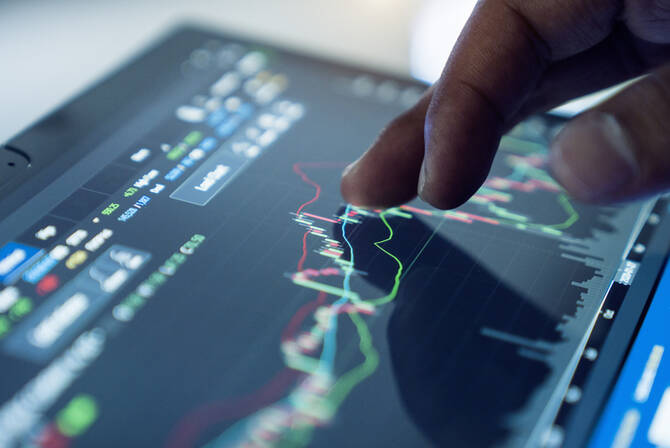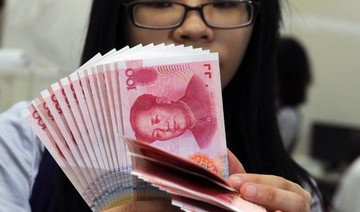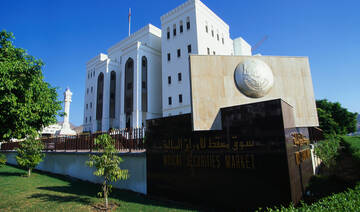BEIJING: China’s economic growth slowed further in the latest quarter, adding to challenges for communist leaders as they fight a tariff battle with Washington.
The world’s second-largest economy expanded by 6.5 percent over a year earlier in the three months ending in September, government data showed Friday. That was down from 6.7 percent for the quarter ending in July and 6.8 percent for the year’s first three months.
Forecasters expected China’s economy to cool after Beijing tightened credit controls last year to rein in a debt boom. But the slowdown has been sharper than expected, prompting Chinese leaders to reverse course and encourage banks to lend.
Communist leaders express confidence their $12 trillion-a-year economy can survive the conflict with US President Donald Trump. But export industries have begun to suffer from American tariff hikes of up to 25 percent on Chinese goods.
Economic performance was “stable overall,” but “we must also see the number of external challenges has increased significantly,” said a government spokesman, Mao Shengyong.
“Downward pressure has increased,” Mao said at a news conference.
Growth in retail spending and investment in factories and other fixed assets, which are much bigger parts of the economy than trade, slowed in the latest quarter, though to still-robust rates.
Retail sales rose 9.1 percent over a year earlier in the first nine months of the year, down 0.1 percent from the first half, according to the National Bureau of Statistics. Investment in factories and other fixed assets rose 5.4 percent in the first three quarters, down 0.6 percent from the first half.
Beijing has rejected US pressure to scale back industrial development plans Washington says are based on stealing or pressuring foreign companies to hand over technology. American officials worry they might threaten US industrial leadership.
The conflict with Washington has prompted communist leaders to step up the pace of a marathon effort to encourage self-sustaining growth driven by domestic consumption and reduce reliance on exports and investment.
Beijing has announced tariff cuts, announced plans to end restrictions on foreign ownership in the Chinese auto industry and taken other steps to rev up growth. But leaders have rejected pressure to scrap plans such as “Made in China 2025,” which calls for state-led creation of Chinese champions in robotics and other technologies.
Washington, Europe and other trading partners complain those plans violate Beijing’s market-opening commitments.
Beijing has responded to previous downturns by flooding the state-dominated economy with credit, but that has swelled debt. The ruling Communist Party has told banks to step up lending, especially to private entrepreneurs who generate China’s new jobs and wealth, but has avoided a full-scale stimulus. Forecasters say it will take the measures some time to work their way through the economy.
Washington has raised tariffs on $250 billion of Chinese goods and Trump says he might extend penalties to almost all imports from China. Beijing responded with its own tariff hikes on $110 billion of American imports but is running out of goods for retaliation due to their lopsided trade balance.
Forecasters say if threatened tariff hikes by both sides are fully carried out, that could cut China’s 2019 growth by up to 0.3 percentage points.
September exports to the United States rose 13 percent despite the tariff hikes, down slightly from August’s 13.4 percent. The country’s politically volatile trade surplus with the United States widened to a record $34.1 billion.
Chinese exporters of lower-value goods such as clothes say American orders fell off starting in April as trade tensions worsened. But makers of factory equipment, medical technology and other high-value goods express confidence they can keep their market share.
Trade accounts for a smaller share of the economy than it did a decade ago but still supports millions of jobs.
On Thursday, the Commerce Ministry promised official help for companies that have suffered due to the American import controls.
“In general, the impact is limited,” said a ministry spokesman, Gao Feng. “Governments at all levels will also take active measures to help enterprises and employees cope with possible difficulties.”
China’s economic growth slows amid trade battle with US
China’s economic growth slows amid trade battle with US

- The world’s second-largest economy expanded by 6.5 percent over a year earlier in the three months ending in September
- ‘Downward pressure has increased,’ government spokesman Mao Shengyong Mao says
Closing Bell: Saudi main index closes in red at 10,325

RIYADH: Saudi Arabia’s Tadawul All Share Index edged down on Monday, shedding 38.83 points, or 0.37 percent, to close at 10,325.20.
The total trading turnover of the benchmark index stood at SR4.02 billion ($1.07 billion), with 61 listed stocks advancing and 191 declining.
The Kingdom’s parallel market Nomu also declined by 144.88 points, or 0.62 percent, to close at 23,226.94.
The MSCI Tadawul Index advanced by 0.11 percent to 1,371.06.
The best-performing stock on the main market was Saudi Industrial Development Co., with its share price rising 6.32 percent to SR12.44.
Al Yamamah Steel Industries Co.’s share price increased by 6.06 percent to SR35.
Cherry Trading Co. also saw its stock climb 5.27 percent to SR26.16.
Conversely, the share price of the National Shipping Co. of Saudi Arabia, also known as Bahri, edged down 5.87 percent to SR26.64.
On the announcements front, SAL Saudi Logistics Services Co. said it intends to issue a riyal-denominated sukuk through a private placement, both inside and outside the Kingdom.
In a Tadawul statement, the company said the amount and terms of the sukuk offering will be determined at a later stage, based on prevailing market conditions.
SAL added that the proceeds will be used for general corporate purposes, capital expenditure plans to support future expansions and projects, and to achieve long-term financial and strategic objectives.
The company has appointed J.P. Morgan Saudi Arabia and SNB Capital as joint lead managers and bookrunners for the sukuk offering.
SAL’s share price declined by 0.63 percent to SR158.90.
In another announcement, Almarai Co. said the diesel price increase from January is expected to result in additional direct costs of approximately SR70 million for the company this year.
The firm added it will continue to focus on business efficiency, cost optimization, and other initiatives to mitigate the impact of the diesel price increase.
Almarai’s share price fell 3.50 percent to SR41.90.













